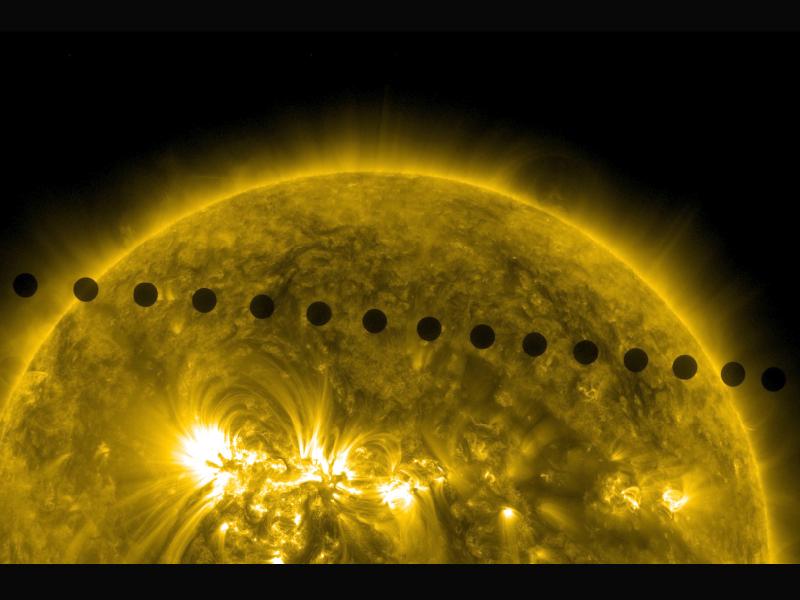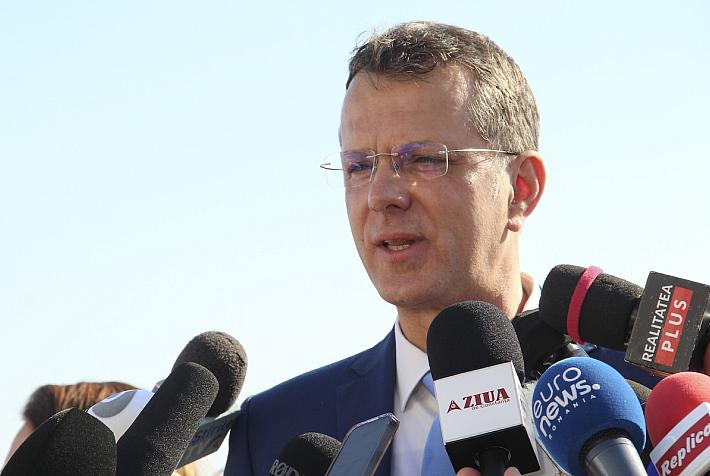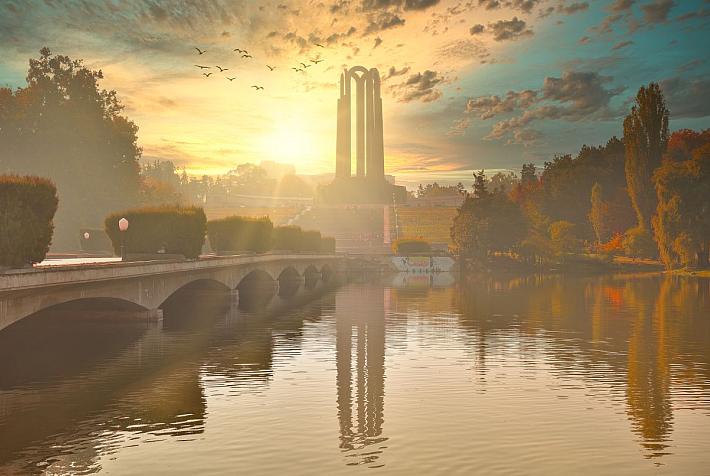Rare Venus transit on Sun's face triggers spectacular images

 The transit of Venus across the face of the Sun in the last two days triggered spectacular images of one of the rarest predictable astronomical events and the interest of both professional and amateur astronomers across the world. This event happens in pairs eight years apart that are separated from each other by 105 or 121 years. The last transit was in 2004 and the next will not happen until 2117. They occur in a pattern that repeats every 243 years, with pairs of transits eight years apart separated by long gaps of 121.5 years and 105.5 years. The next transits of Venus will be December 10-11, 2117, and in December 2125.
The transit of Venus across the face of the Sun in the last two days triggered spectacular images of one of the rarest predictable astronomical events and the interest of both professional and amateur astronomers across the world. This event happens in pairs eight years apart that are separated from each other by 105 or 121 years. The last transit was in 2004 and the next will not happen until 2117. They occur in a pattern that repeats every 243 years, with pairs of transits eight years apart separated by long gaps of 121.5 years and 105.5 years. The next transits of Venus will be December 10-11, 2117, and in December 2125.

Venus appeared as a small black dot on the face of the Sun, visible with the naked eye when viewed with a filter to block out the sun's glare. The transit across the Sun's face lasted for six hours and 40 minutes this year.
A transit of Venus across the Sun takes place when the planet Venus passes directly between the Sun and the Earth, silhouetting the planet against the solar disk. The June 2012 transit gave scientists exciting research opportunities, such as refining the techniques used to search for exoplanets.
English astronomer Edmond Halley realized in the early 18th century that a transit of Venus could be used to calculate the distance of the Earth from the Sun and estimate the size of the Solar System. Halley died before the next transit, but an international scientific mission put his theory into practice, sending teams to points around the world to measure the exact time, duration and path of Venus' transit across the Sun's face.
 The results allowed astronomers to calculate the Earth's distance from the Sun accurately for the first time and the distance was used to define 1 Astronomical Unit, a measurement used in Astronomy ever since and still vital in the study of exoplanets.
The results allowed astronomers to calculate the Earth's distance from the Sun accurately for the first time and the distance was used to define 1 Astronomical Unit, a measurement used in Astronomy ever since and still vital in the study of exoplanets.
editor@romania-insider.com
(photo source: NASA; first image shows the transit path on the face of the Sun)











